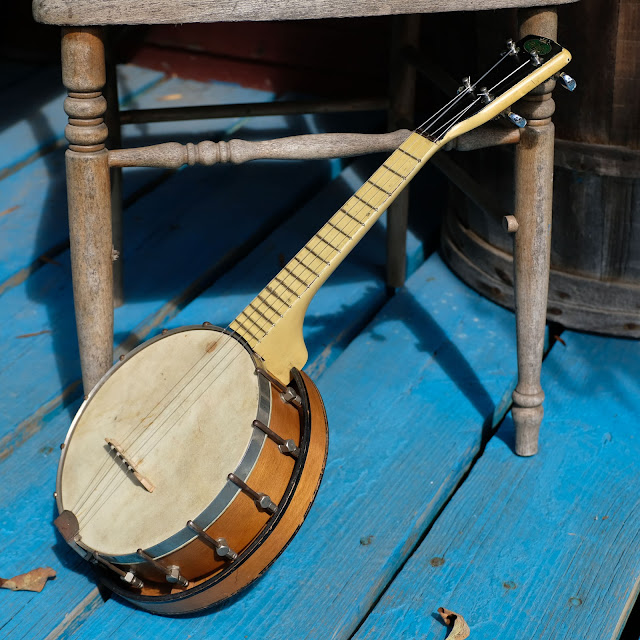1930s Regal 8" Resonator Banjo Ukulele
My friend Tom Steventon scored this for me (he's an antiques-rustler) and I did all the work on it the other day. It's a nice, bigger-rim (8" diameter) model with a longer (14") scale. The neck is slim and fast which suits sliding-chord players in the vintage fashion. It's rarer to find Regal-made models with resonators but this one has a full one in addition to a cool, creamy-yellow-painted neck and the '30s-style rounded-edge headstock Regal used on their own products and many of the LeDomino-branded ones.
Work included a fret level/dress, re-regluing open seams on the resonator, installation of geared pegs at the headstock (I had some neat vintage early-'60s ones to throw on -- so much more practical than friction pegs), side dots install, general cleaning, an additional bolt-mount behind the main neck brace, and a good setup. The neck is straight, it plays on-the-dot with 1/16" action at the 12th fret, and it's strung with Martin fluorocarbon strings.
Specs are: 14" scale, 1 1/4" nut width, 1 1/16" string spacing at the nut, 1 3/8" spacing at the bridge, 8" head, and 9 1/2" resonator diameter.
Woods are: poplar neck (I believe), maple rim (no tonering, just shaped upper-edge), and maple resonator. The instrument is 100% original save the tuners and parts-bin 5/8" Grover bridge.
I was happy to get a good, tall, 5/8" bridge on here.
The resonator rear is shaped plywood with birdseye-maple veneer.
While these tuners are not original, I think they're a lot more practical than friction pegs for the average uke player. They also suit the low-brow looks and style of this instrument.
Right! It also comes with an original chip case in decent shape, too. I patched a few things with black duct-tape, of course.
Here's inside the rim. Note that I have foam damping both under the tailpiece cover and behind the dowel to cut-down on overtones and keep the sound more fundamental and snappy. Behind the guard-plate for the neck brace I've also hidden a bolt that runs into the heel. This keeps the neck more firm to the pot and maintains its proper position better than just the neck brace.
















Comments